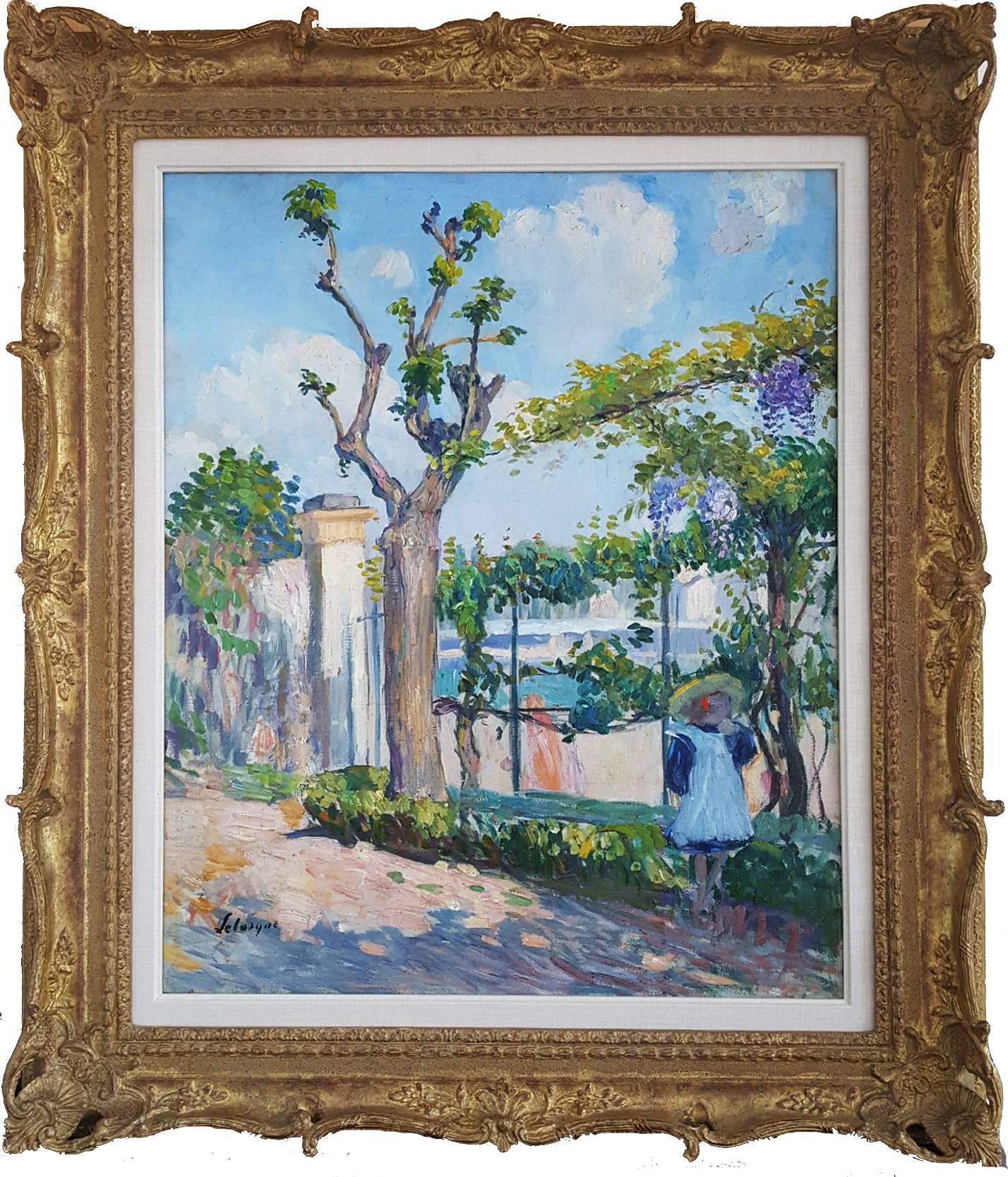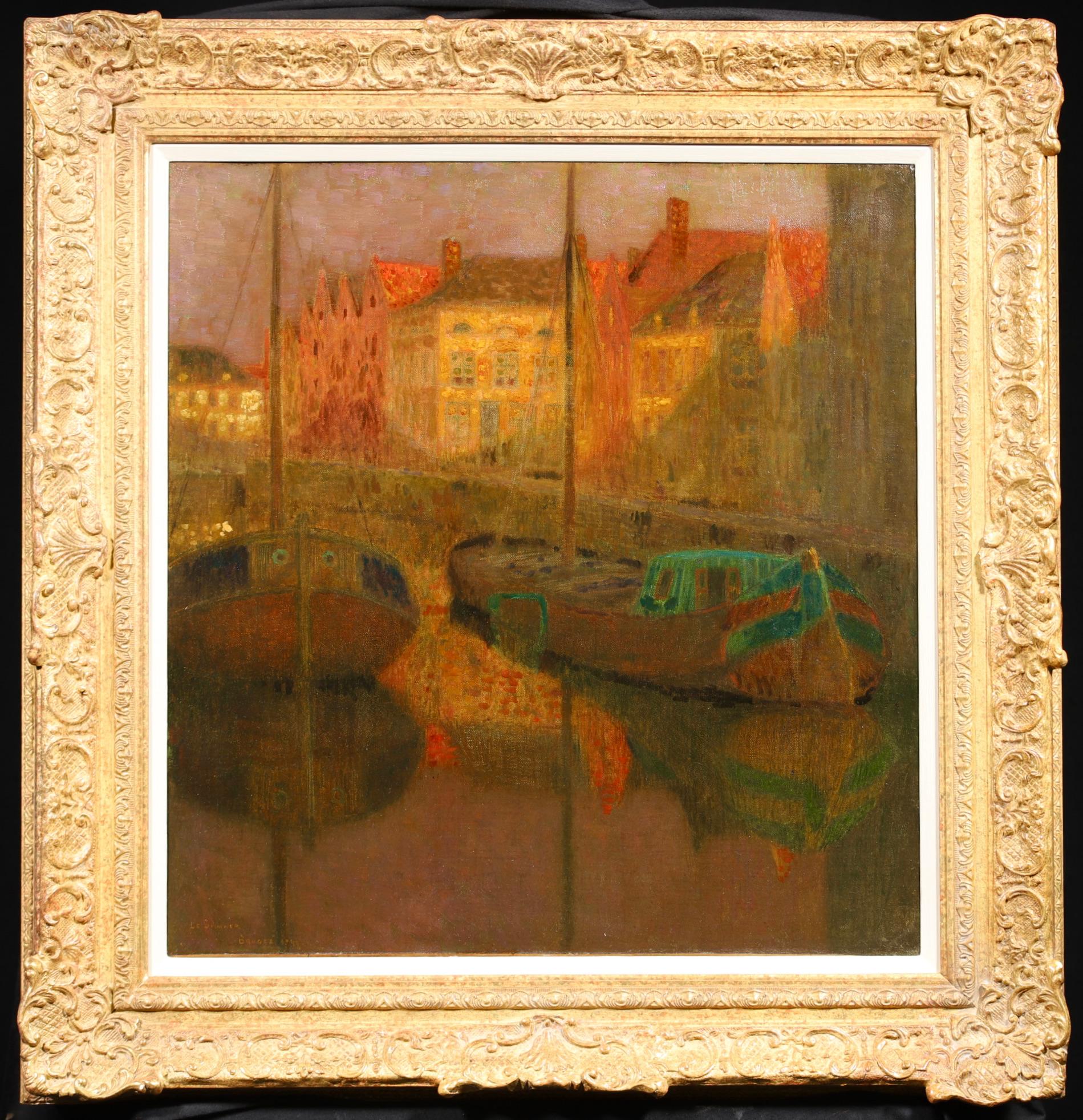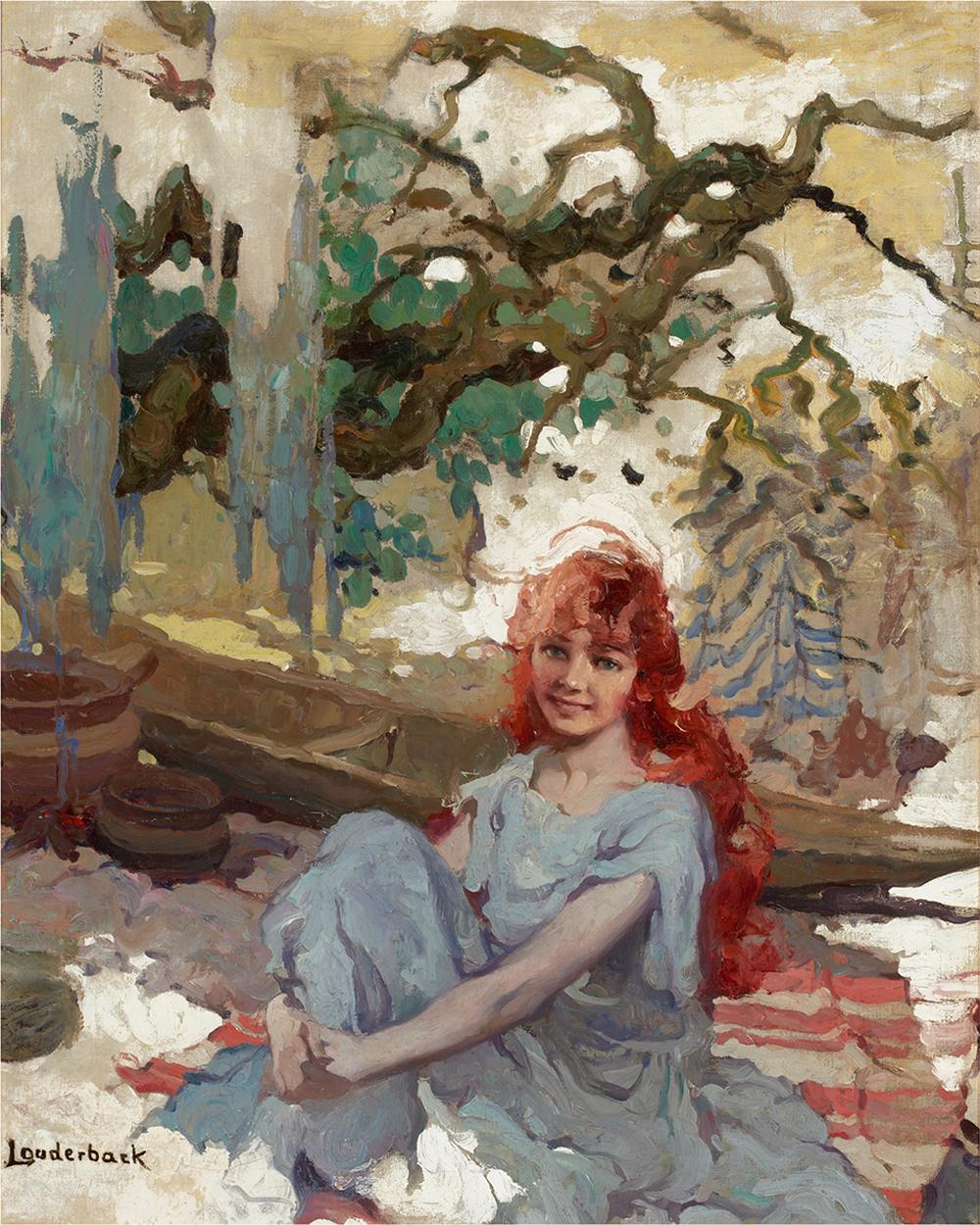Items Similar to "Theatre du Vaudeville", Edouard Cortes, 18x22, Oil/Canvas, French Impressionism
Video Loading
Want more images or videos?
Request additional images or videos from the seller
Édouard Cortès"Theatre du Vaudeville", Edouard Cortes, 18x22, Oil/Canvas, French Impressionism1950-1955
1950-1955
About the Item
Vaudeville Theatre by Edouard Cortes was painted circa 1955-60 and signed lower left. It is oil on canvas measuring 18x22 in original unlined condition. The piece is included in the Catalogue Raisonne - The complete works of Cortes and includes the certificate of authenticity to prove it. The Théâtre du Vaudeville was a theatre in Paris. It opened on 12 January 1792 on rue de Chartres. Its directors, Piis and Barré, mainly put on "petites pièces mêlées de couplets sur des airs connus", including vaudevilles. From 1866 to 1868, a new Théâtre du Vaudeville was built on boulevard des Capucines, at the corner of Rue de la Chaussée-d'Antin, in the 9e arrondissement.
Edouard Cortes was born in Lagny, France on April 26, 1882, a time when Paris was considered the center of the art world. Artist from across the globe traveled there to study with the 'masters' and paint France's beautiful countryside and cities and views of Paris, or as it became known ‘the City of Lights’, were in great demand by both collectors and tourists. Edouard Cortès, along with other artists like: Eugene Galien-Laloue (1854-1941), Luigi Loir (1845-1916) and Jean Beraud (1849-1936) answered their call. Specializing in Paris street scenes, each of these artists captured the city during its heyday and continued with these scenes well into the 20th century.
In 1899, at the age of 16, he exhibited his first work at the Société des Artistes Français entitled La Labour. The work was well received by the critics and the public - helping establish Édouard’s favorable reputation in Paris. It was at the turn of the century, c.1900, that he began to paint the scenes that he would become most famous for – Paris’ streets and monuments. One of the more prolific artists of his time, Cortès found his niche and stayed with it. His views of Paris are among the most telling and beautiful images of this genre; capturing the city during all its seasons for more than 60 years. Edouard married Fernande Joyeuse in 1914 and had a child – Jacqueline Simone in 1916. Fernande died in 1918 and shortly after that Edouard decided to marry his sister-in-law Lucienne Joyeuse. They settled in Paris and Edouard continued to paint views of Paris. By the mid 1920’s, Edouard and his family moved back to Lagny (in Normandy) and he began painting
scenes of country life - including landscapes, interior scenes and still lives. He was an active member of the Union des Beaux-Arts de Lagny and was the Unions first president. Their inaugural exhibition was held in 1927 and Cortès continued to exhibit there until the late 1930’s.
During this period he received many awards, gained great notoriety and was a frequent exhibitor at the exhibition halls in Paris, including the Salon d’Automne, Salon d’Hiver, Salon de la Société Nationale de l’Horticulture and Salon des Indépendants.
His qualities as a painter, in addition to his sensitivity, allowed him to paint the street scenes of that time under their most charming, attractive and real light. Transposed by his brushes, each spot of Paris becomes a veritable sparkling jewel. The most ordinary scene, through a sensitive, generous and elaborate palette, irresistibly fascinates and moves us. Only through a detailed study of his canvases can we understand how this artist, with apparently simple means, could obtain
such gripping effects. His bold touch never lingers over a superfluous detail. What best proves his talent is the accuracy of his drawing and the naturalness of the scene he paints, his extraordinary use of sun or rain, with reflections in the puddles in the streets.
It was therefore natural for such a talent to be recognized in France and throughout the world as that of a first class artist with great sensitivity and high artistic qualities. It is not surprising that his works, more valuable each day, were appreciated by many collectors.
Cortès’ beautiful depictions of Paris were always in demand and he continued to paint them until his death in 1969.
- Creator:Édouard Cortès (1882 - 1969)
- Creation Year:1950-1955
- Dimensions:Height: 18 in (45.72 cm)Width: 22 in (55.88 cm)Depth: 3 in (7.62 cm)
- More Editions & Sizes:29x33 in. framedPrice: $55,000
- Medium:
- Movement & Style:
- Period:
- Condition:
- Gallery Location:Dallas, TX
- Reference Number:1stDibs: LU1301210793762
About the Seller
5.0
Gold Seller
These expertly vetted sellers are highly rated and consistently exceed customer expectations.
Established in 1967
1stDibs seller since 2019
22 sales on 1stDibs
Typical response time: 1 hour
- ShippingRetrieving quote...Ships From: Dallas, TX
- Return PolicyA return for this item may be initiated within 14 days of delivery.
More From This SellerView All
- "Le Pantheon - Paris, 1905", Edouard Cortes, 13x18, Oil on Canvas, ImpressionismLocated in Dallas, TXVaudeville Theatre by Edouard Cortes was painted circa 1955-60 and signed lower left. It is oil on canvas measuring 13x18 in original unlined condition. The piece is included in the ...Category
1950s Post-Impressionist Landscape Paintings
MaterialsOil, Canvas
- "Theatre de Sara Barnhardt", Edouard Cortes, 13x18, Oil on Canvas, ImpressionismLocated in Dallas, TXTheatre de Sara Bernhart et Place de Chatelet by Edouard Cortes was painted circa 1935-40 and signed lower right. It is an oil on canvas measuring 13x18...Category
1930s Post-Impressionist Landscape Paintings
MaterialsOil, Canvas
- "Les Lumieres de la Boulevard", Gerard Valtier, Oil on Canvas, French, 28x23 in.By Gerard ValtierLocated in Dallas, TX"Les Lumiere de la Boulevard" by Gerard Valtier is an original oil on canvas that measures 28x23 inches. This impressionistic painting has an array of bright colors to create a fun a...Category
2010s Impressionist Figurative Paintings
MaterialsOil, Canvas
- "Le Cafe Boheme de Paris", Gerard Valtier, Oil on Canvas, French, 29x36 in.By Gerard ValtierLocated in Dallas, TX"Le Cafe Boheme De Paris" by Gerard Valtier is an original oil on canvas that measures 29x36 inches. This impressionistic painting has an array of bright c...Category
2010s Impressionist Figurative Paintings
MaterialsOil, Canvas
- "A Quiet Repair", Henni de Korte, 27x35 in, Oil on Canvas, Classic ImpressionismLocated in Dallas, TX"A Quiet Repair" by Henni de Korte measures 27x35 and is available for $11,500. A man standing on a small white boat in calm waters is quietly trying to fix a problem before sailing ...Category
1990s Impressionist Landscape Paintings
MaterialsOil, Canvas
- "Repairing the Nets", Henni de Korte, 19x23 in, Oil on Canvas, ImpressionismLocated in Dallas, TX"Repairing the Nets" by Henni de Korte measures 19x23 and is available for $8250. Fishing boats are docked in a quiet cove of a village while the fisher...Category
1990s Impressionist Landscape Paintings
MaterialsOil, Canvas
You May Also Like
- Bords du Loing by Alfred Sisley - Oil, landscape paintingBy Alfred SisleyLocated in London, GB*THIS PRICE INCLUDES 5% IMPORT DUTY APPLICABLE IF THE WORK REMAINS IN THE UK ONLY. Bords du Loing by Alfred Sisley (1839-1899) Oil on canvas 46.1 x 55.7 cm (18¹/₈ x 21⁷/₈ inches) S...Category
1890s Post-Impressionist Landscape Paintings
MaterialsCanvas, Oil
- Le Jardin de Lagny - Garden with young girl Post-impressionistBy Henri LebasqueLocated in Miami, FLLe Jardin de Lagny Provenance: Arthur Tooth, London Radon Gallery, NY This beautiful evocation of a lyrical French landscape is a fine example of of Po...Category
Early 1900s Post-Impressionist Landscape Paintings
MaterialsOil, Canvas
- Barques de Peche - Post Impressionist Landscape Oil by Henri Le SidanerBy Henri Le SidanerLocated in Marlow, BuckinghamshireSigned post impressionist landscape oil on canvas by French painter Henri Le Sidaner. This stunning piece depicts two fishing boats moored in a fishing village at sunset. The last l...Category
1890s Post-Impressionist Landscape Paintings
MaterialsOil, Canvas
- Girl with canoe painted in Arts and Crafts styleBy Walt LouderbackLocated in Miami, FLSigned lower left. Most likely for Saturday Evening Post or Colliers. Louderback is a painter/illustrator of the Golden Age of Illustration...Category
1920s Post-Impressionist Figurative Paintings
MaterialsCanvas, Oil
- Haystack with Resting FiguresBy John Maclauchlan MilneLocated in Hillsborough, NCScottish artist John Maclauchlan Milne, RSA, (1885-1957) is a contemporary of Scottish Colourists Peploe, Fergusson, Cadell and Hunter. Like the...Category
1920s Post-Impressionist Landscape Paintings
MaterialsCanvas, Oil
- Henri-André Martin, Les Baux de Provence, Oil on Canvas, 1961By Henri-André MartinLocated in Saint Amans des cots, FROil on canvas by Henri-André Martin (1918-2004), France, ca.1980s. Les Baux de Provence. With frame: 71x98 cm - 28x38.6 inches. Without frame: 65x92cm - 25.6x36.2 inches. 30P format. Signed lower right "Henri A Martin" (see photo). Located and dated 1961 on the back (see photo). Can be matched to make a pair with another painting by Henri-André Martin that we offer on 1stdibs whose title is "Henri-André Martin Olive Tree Field in the Alpilles, Provence, Oil on Canvas". Born in Lyon in 1918, the child and the adolescent Henri-André Martin spent his youth in Saint-Étienne, his father, Edme Martin, first installed as a practicing doctor in Lyon, having been appointed doctor of the anti-tuberculosis dispensaries of the Loire. During his first years of studying medicine in Lyon, he nevertheless enrolled in the Beaux-Arts. Appointed hospital intern upon his return from captivity in 1942, he ended his medical career as director of the otolaryngology university clinic at Édouard-Herriot hospital. But painting was his passion. Painting was for Henri-André Martin the way of expressing his feelings. By nature very reserved and of an extreme modesty that many took for coldness, it was what allowed him to express his strong artistic sensitivity and, his pictorial periods are as many reflects of his anxieties, of his hopes, of his joys. At every period of his life, wherever he goes and whenever he has a moment, he paints gouaches, often of small size, but sometimes of larger size. He also paints beaches that have been compared to those of Boudin. Their invoice shows, however, that this figure is only appearance and that in fact, these beaches made of water, sky and sand, readily dispense with the motif, the work of the material seeming to have more importance. as the subject. Despite the fact that until the 1970s he painted "on the ground", his canvases remain far removed from the anecdote. Often harsh like the landscapes of Provence, the Parisian walls which express concern, or the railways, the switch tracks which suggest, in ocher and black, all the embarrassment of choice. We find the same nostalgic gravity in the canvases of the carcasses of boats which, as his friend Louis Pons later wrote, "seem to die of immobility" or in the canvases of Venice, or the landscapes of Eygalières. In the following years, his painting became simpler, more synthetic, such as these landscapes with tortured almond trees, black and gnarled olive trees, plane trees standing out against the ocher sky of the dawn of Provence, in winter. These are also the canvases of Hamburg in the dough becomes heavier, the colors darken, marking all the gravity of the port landscapes. Workshop work gradually takes precedence over motif painting. The pivotal period coincides with that of his work on the olive tree, during which he leads the realization of the "Trunks", a collection of six lithographic plates, of the book L'olivier comprising many lithographs and serigraphs, but also texts. poetic and numerous paintings. He then became passionate about everything related to the olive tree (literature, painting, traditions, history), but also to the tree itself, its thousand-year-old history, its poetry, its symbols, but also its culture, its size. oil production...Category
1960s Post-Impressionist Figurative Paintings
MaterialsCanvas, Oil
Recently Viewed
View AllMore Ways To Browse
French Impressionism
French Impressionism Art
French Impressionism French Impressionism Art
Oil French Country
French Impressionism Painting
Theatre Sign
French Impressionism Artists
French Impressionism Oil Paintings
French Impressionism Oil Painting
Impressionism Paris
French Art Theatre
20th Century Impressionism
French Spot Light
Theatre Canvas
20th Century Impressionism Paintings
1920s Paris France Paintings
Oil Paintings Theatre
French Impressionism Landscapes




